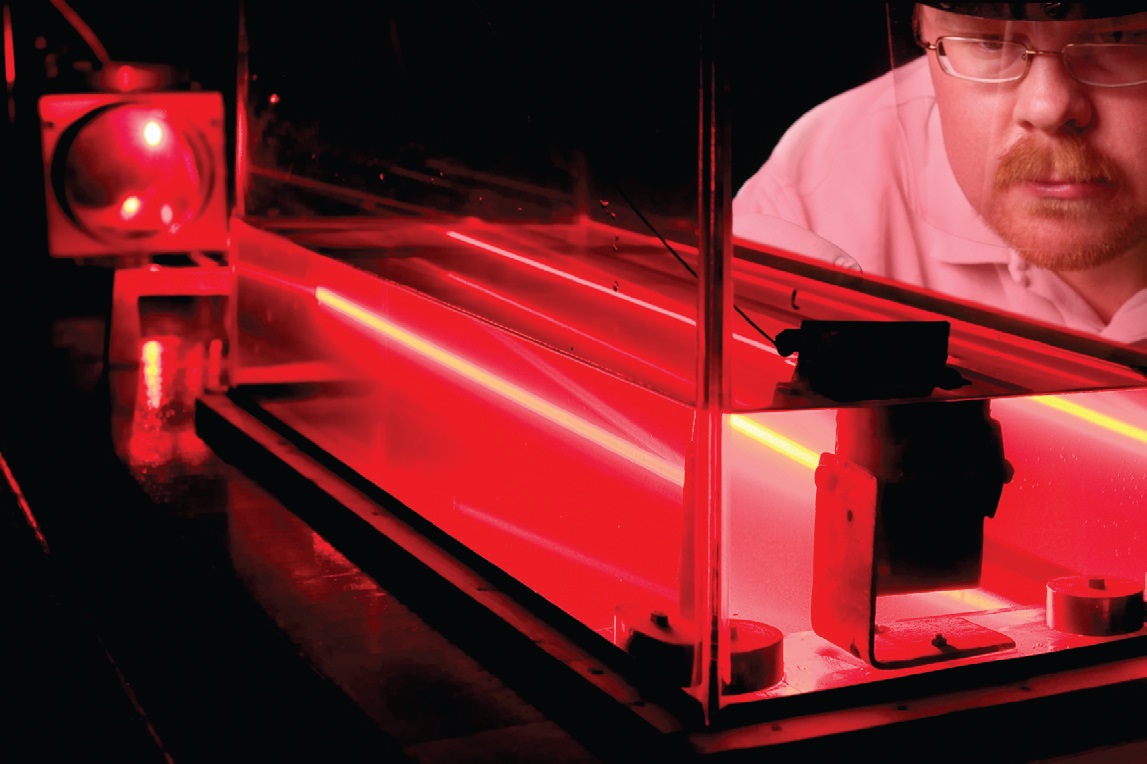Shedding light on lasers
Dr. Maureen Hunter | TLT From the Editor February 2009
Lasers are used in hundreds of applications in science, industry, medicine and the military.

I recently attended a very Bohring STLE local section meeting. Please note that I said “Bohring,” not boring. The lecture, about varnish formation in lubricants, contained fascinating video capturing the light produced in oil. The talk was great, although the speaker did have trouble with his laser pointer.
During my drive home I was listening to the radio when a local advertisement came on announcing, “We’ve made a quantum leap in technology!”
“Oh, that’s impressive,” I said back to the radio, shaking my head.
Think about it. A quantum leap is the absolute smallest leap in the universe! It’s when an electron jumps from one energy level to another. Well, this got me thinking about how the light was produced in the oil. And that got me thinking about that laser pointer.
“Laser” is an acronym for “light amplification by stimulated emission of radiation,” which describes exactly how a laser works. There are three important components of a laser.
First is a collection of atoms whose electrons have one dominant quantum jump. The collection of atoms can be a gas, a liquid or a crystal. The common red laser pointer uses a tiny ruby crystal. A photon—that is, light energy—is emitted when an electron leaps from a higher energy level down to a lower level. The red wavelength corresponds exactly to the energy of the quantum jump in the ruby’s chromium atoms.
Second, you need a source of energy to stimulate these atoms and pump them into an excited state. A battery is usually used for a laser pointer. At first just a few electrons jump down and produce that red wavelength of light. But then those red photons start cascading, and they pulse and stimulate other electrons into cascading in the same way until you get a crescendo of photons all of the same pure red wavelength.
Third, you need a pair of parallel mirrors so you can align the resultant light and make it into a single thin beam. The photons bounce back and forth between the mirrors, but one of those mirrors is slightly transparent and lets about 5% of the photons pass through. That’s the laser beam that shoots out of the laser pointer.
Did you know that the laser is a direct consequence of our understanding of the Bohr Atom? Not the “Boring Atom” but that remarkable and counter-intuitive atomic model introduced by Niels Bohr for which he won the 1922 Nobel Prize. It’s unlike anything we’ve experienced in life.
In the Bohr Atom, electrons can reside in several discrete stationary states at well-defined distances from the nucleus. Since the electrons are stationary, these different energy levels are rather inappropriately called orbits. As electrons jump back and forth between the different orbits, specific wavelengths are either absorbed or emitted by that atom.
But the electrons don’t move from one orbit to another, they vanish from one orbit and reappear in another. Light—that is, a photon—is only emitted when an electron leaps from a higher energy level down to a lower level. The Bohr model of the atom reveals that wavelengths of absorbed and emitted light correspond exactly to those quantum jumps.
Today the laser finds hundreds and hundreds of applications in science, industry, medicine and the military. You find them in everything from CD players to dental drills to high-speed metal cutting machines to measuring systems. They are used for tattoo removal, hair replacement and eye surgery. And, of course, they are used in lecture pointers.
Now if that radio ad had been for a laser pointer, I would consider buying one from that company. The laser is one of the great advances of our time—a true quantum leap in technology. But since that company has only made the absolute smallest advancement in the technology of their product, I don’t think that I’ll be buying anything from them soon!
 Maureen Hunter is technical service manager for King Industries in Norwalk, Conn. You can reach her at mhunter@kingindustries.com
Maureen Hunter is technical service manager for King Industries in Norwalk, Conn. You can reach her at mhunter@kingindustries.com.